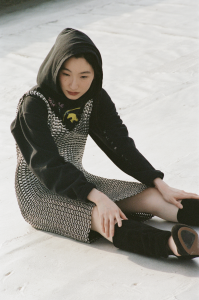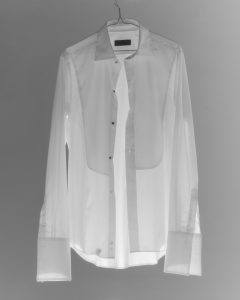- The design director and David Hellqvist discuss what makes a garment ‘vintage’, how much of LVC is based on replicas and why we assume people didn’t wear loud colours in the 1930s
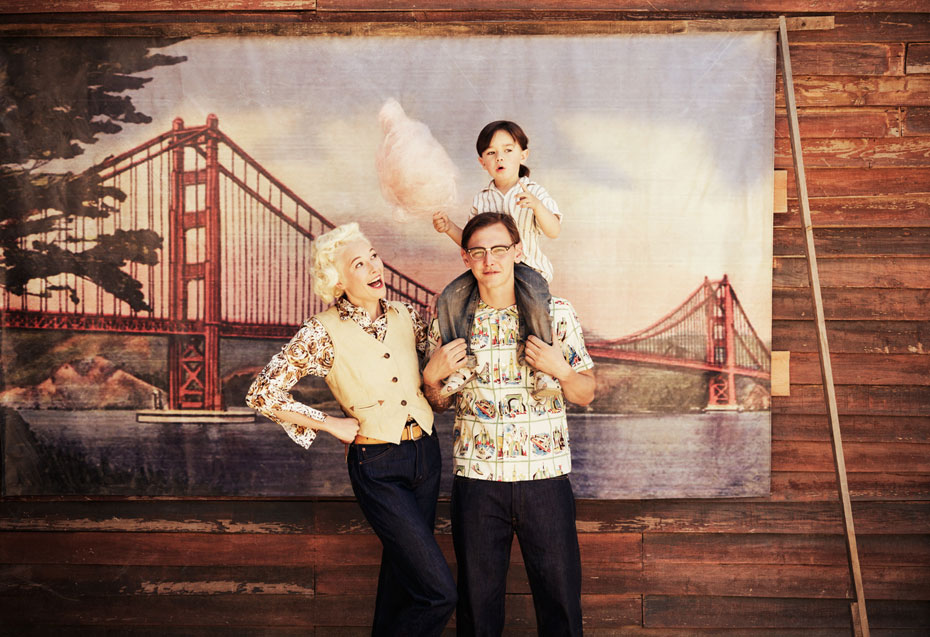 Text David Hellqvist
Text David Hellqvist
Images courtesy of Levi’s Vintage ClothingFashion is often all about looking back in time; there are very few new garments left to invent and discover. Like the old explorers, previous generations of designers have already tried and tested most of the potential sartorial delights – and nowhere is that as true as with menswear, a gender division of fashion already restricted by many boundaries. American denim giants Levi’s, then, are lucky that so much about the brand is based on garments and wardrobe staples with a stellar history and a never-ending archive of classics to reproduce in updated versions. It’s not all about the past of course, and it would be unfair to say that Levi’s is only focused on yesterday, as opposed to tomorrow. But, especially when it comes to such a fabric as denim, the original way of producing – championed by Levi’s since its 19th century incarnation – is still miles ahead.

- Having settled in San Francisco, Levis Strauss, a German immigrant, and Jacob Davis, a Latvian refugee, famously patented their denim trousers held together by rivets, making them durable and suitable as work wear, in 1873. Today, over 140 years later, the Levi’s denim garments aren’t just used by cowboys and construction workers, but everyday people living everyday lives. It’s the fabric that, arguably, best defines the post-modern and pop cultural society we live in today. Obviously, the denim torch was handed over from Strauss and Davis generations ago, and today – at least as far as the Levi’s Vintage Clothing and Made & Crafted lines are concerned, the creative responsibility lies with design director Miles Johnson.
As a former costume designer, Johnson’s way to the Levis European HQ in Amsterdam was helped by the fact that his MA graduate show from Central Saint Martins focused on denim. Shortly after, Johnson was snapped up by Levi’s and he’s been heading up both the retro-focused Vintage collection and the more trend-led Made & Crafted line since 2003. Meeting in the Levi’s Vintage Clothing store, or Cinch as it’s also called, on Newburgh Street, just off Carnaby Street in London’s Soho, we’re surrounded by the current SS14 collection. “This vintage collection is based mostly on the 1939 World Fair, which took place in San Francisco – it was a big celebration of American culture and it was an amazing event that happened on an island built out in the bay,” Johnson explains. The design team looked at old images of people visiting the fair for inspiration: “The visitors dressed in that typical 1930s way, with beautifully slicked hair, tucked-in neat T-shirts, suspenders and high-waisted denim trousers,” he says.
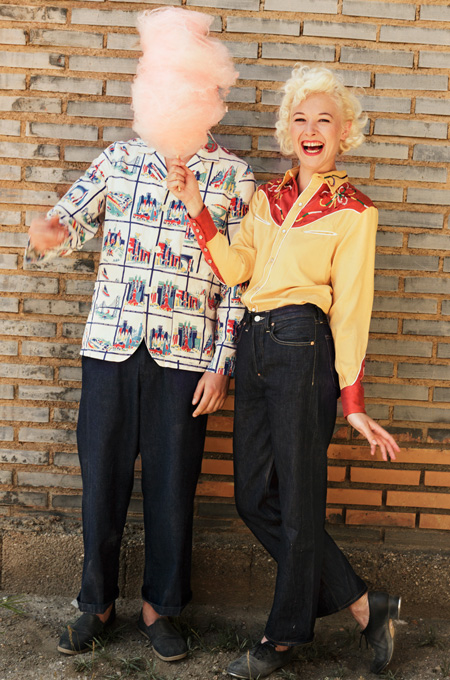

- But, in between printed Hawaii shirts and college sweatshirts, it’s the Levi’s slacks in strong primary colours that stand out from the current season. In green, yellow and red, the colours are not what we expect people to have worn in the 1930s. “Well, actually, funnily enough they did – we’re so obsessed by black and white imagery because, of course, that’s all we have – but when you see the original garments we have in the archive from the 1920s, there’s neon T-shirts that came with matching berets… It’s easy to think everything was black, white and grey,” Johnson says, himself decked out in a mismatching cacophony of loud colours. But go back and put Levi’s in a geographical context and it all makes sense: “At that time Levi’s was still very much a California-based collection mostly for Californian people, so this would have stayed quite close to home. So in context I would imagine it was for people in leisure.” The trousers now available in store are an exact copy of the ones Levi’s produced in 1958, made out of cotton satin and with a tapered ankle-length fit. “The whole idea of it was a collaboration that we did with the Jell-O company – they came with a little box of jello with either lime, orange or lemon flavours.”
The Levi’s Vintage Clothing brand was founded in 1999, just a few years before Johnson joined. Since then, for 15 years and 30 collections, Johnson and his team has borrowed heavily from the Levi’s archives. “I’d say 85% is actual Levi’s archival reproduction and 15% is kind of a mix of general vintage and adaptations of Levi’s designs,” he says of the collections. Is there any risk of that creative well ever drying up, how much is there left to look at? “There’s still a lot we haven’t done yet. It’s strange with the archive, every time you go there – because, of course, we go there every season to start off our research – it’s like someone turns on a different set of lights because some of the things we’ve been looking at for many, many years and they’ve not just been right… until now. At the moment we’re looking for all these patterned Western shirts, and there are some incredible ones, but I wouldn’t have looked at them two years ago. Now I am.”
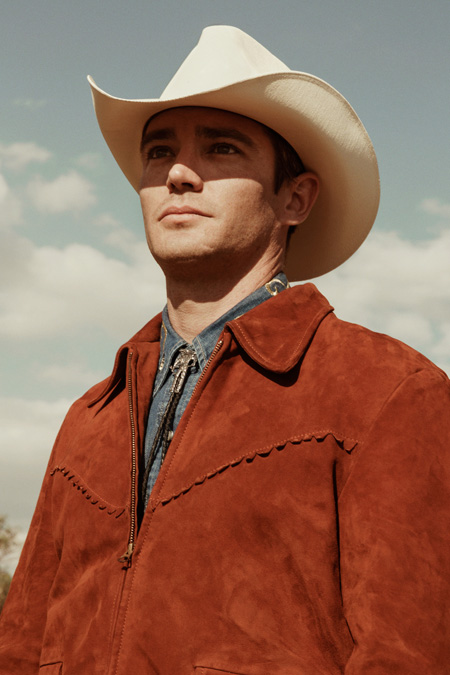

- Johnson also looks after Made & Crafted and, as mentioned, it’s more modern and contemporary in its design approach. Whereas the Levi’s Vintage Clothing is about re-appropriating the old classics for today, Made & Crafted is less about replicating and more about inventing. But the two lines are connected: “It’s like two sides of a coin for me, that’s why it’s nice to work on both. You’re working on telling the history of the brand but also doing something for the future, so one thing informs the other. It’s nice to have learnt so much about the historical ways to construct garments, or to have observed the classic pieces, so that if we ever want to do a modern version for Made & Crafted, we can base it on that.”
Another aspect that Johnson has to take into consideration is what really constitutes ‘vintage’ and how you, from a timeline perspective, define the term. Johnson says there are unwritten rules within the company that a Levi’s Vintage Clothing garment can’t be based on anything later than 1983-85. “That was when the last original selvage fabric that we produced with Cone Mills was made,” he explains. When LVC was set up in 1999, Levi’s went back to the legendary North Carolina mill with the original logbooks and managed to get them to reproduce the exact same fabric. But the cut-off date makes sense in more ways than one: “We’ve got so much history that if we brought out a Levi’s Vintage collection that was just 1990s pieces I don’t think we’d have the same reaction if we do a collection which just celebrates pieces from the 1920s or 30s. I think people are much more interested in the really old stuff, because you just cant get that from another brand.”
There’s a wealth and breath of product from the 1920s leading up to the 70s that deserve to be celebrated, and Miles Johnson makes sure those celebrations are spread out each season. “Yes, it’s important that we have pieces from the 70s in there, as well as the 20s and the 50s – you cant just go for one decade in a collection, we have to make sure we mix it all together in a look that will appeal to someone today.”
 Above: Miles Johnson, design director of Levi’s Vintage and Made & Crafted
Above: Miles Johnson, design director of Levi’s Vintage and Made & Crafted
Subscribe to Port Magazine annually and receive each issue to your door.
Get PORT in print

